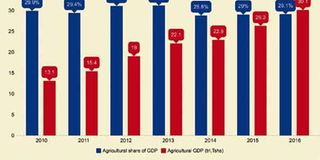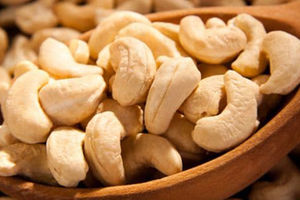What makes agriculture key to industrialisation

What you need to know:
- Despite the fact that about 70 per cent of Tanzania’s population depends on agriculture, the sector also provides over 65 per cent of the industrial raw materials. The sector’s growth is still low but some individuals are working hard to accelerate agro-processing.
Dar es Salaam. Although agriculture is Tanzania’s economic mainstay, its productivity is still low.
It is estimated that 70 per cent of the population depends on agriculture. The sector accounts for 30 per cent of the gross domestic product (GDP), but experts say its potential is higher than that.
Until 2016, Tanzania had over 44 million hectares of arable land, with only 33 per cent of it cultivated.
Produce quality and quantity are low while agro-processing is poor.
However, some individual Tanzanians are striving to ensure agro-processing industries grow.
Kapunga Rice Project in Mbarali District in Mbeya is a good example of agro-processing.
The project has 500,000 hectares of rice.
Project manager Edward Rweyendara says close ties have been established with thousands of smallholder farmers by providing them access to farms, seeds, fertilisers, equipment, seeds, harvesting and transport services.
“We give them knowledge on modern farming. We help them to till their farms and give them better seeds from Super Dakawa. Previously, the used to sow poorly-yielding seeds which produce below one tonne per hectare, but now produce up to 6.5 tonnes per hectare,” he says.
Apart from out-growers, Mr Rweyendara says modern technology is used to irrigate 3,500 hectares.
Some 22,000 tonnes of rice are harvested annually.
“Over 10,000 people in surrounding communities have benefited directly or indirectly from our operations. Smallholder farmers have immensely benefited from our out-grower scheme while improving the sustainability along the agricultural supply chain,” he says.
However, some agricultural stakeholders say poor production impedes agro-processing.
The chairman of the Association of Edible Oil Processors, Mr Ringo Iringo, speaks about the need to improve the production of sunflower seeds to feed factories. “Since we started advocating production and agro-processing of oilseeds, production has increased. Currently, sunflower is cultivated in 25 regions. But we still call on farmers to increase production,” says Iringo. “So far, we have 800-1,000 factories for processing edible oils, but the supply of oilseeds is low.”
Agro-industry stakeholder Hussein Kamote speaks about low production and farmers’ lack of connection with factory owners. Taking an example of orange production in Tanga, he says a factory in Korogwe was closed down due to the fruit shortage.
“It is true that many oranges come from Tanga, but they are insufficient to feed a factory. It’s also true that most vegetable farmers especially tomato farmers crying of market but they produce their tomatoes have a high water content, which is unsuitable for industrial processing. This happens because farmers do not know what factory owners really want.” Apart from low production, Mr Kamote also points out unreliable power supply.
“Most farmers are in rural areas where electricity is scarce. You can’t run a factory without electricity. We appreciate the government efforts to electrify rural areas to encourage investors to build factories.”
He speaks about the importance of commercial farming.
The Agricultural Council of Tanzania director for policy and planning, Mr Timothy Mmbaga, urges the government to increase funding for agriculture to at least 10 per cent of the national budget.
He underscores the importance of investing in irrigation infrastructure to attract investors in farming.
“There should be reliable supplies of agricultural inputs and reliable markets. We also need to commercialise and formalise agriculture.”
“After independence, agriculture used to account for 90 per cent to the GDP, but when other sectors such tourism, mining, oil and gas and communications grew it was outmatched.
“That’s why the contribution of agriculture to GDP remains unnoticed. But we should ask ourselves, at what rate is the sector growing?”




